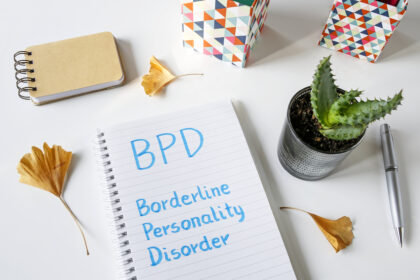How Oxytocin Affects BPD
Introduction
Attempting to understand how Borderline Personality Disorder (BPD) manifests between various individuals could be considered a daunting task. This could be because there are so many symptoms and conditions behind the diagnosis which make it so different from case to case. Regardless of how the condition manifests, it is arguable to suggest that there are most certainly methods for better understanding the specific symptoms, as well as the specific conditions, which are engrained within a BPD diagnosis. Neurotransmitters and hormones are one of the easiest ways to measure varying chemical balances, and the way the brain operates, during any situation. This could easily be argued true despite the symptom or scenario itself. That said, it is imperative that a study is in place which better analyzes neurotransmitter and hormone output during critical stages of BPD symptom manifestation. While some neurotransmitters may be more difficult to analyze, it is possible to gather data on nearly any of them. Given BPD is known to be such an emotional condition, it could also be said that analyzing oxytocin levels during various activities, would give researchers and mental health professionals a better understanding of how BPD changes a person’s interpersonal interactions, bonding rituals, and attachment behavior.
Literary Review
Oxytocin was first discovered in 1835 by Nicholas Farraye, an Italian scientist (Parmar & Malik, 2019). It was classified as a powerful molecule with “loving” attributes displayed during biological and behavioral activities. The hormone is said to play a large role in an individual’s experience of love and bonding with other people. It is very strongly associated with romantic love and “encourages cuddling” between romantic partners. It is also known to increase pleasure during intimacy. Specifically, the hormone is responsible for stimulating smooth muscles and sensitizing nerves during arousal and pair-bonding. It has been suggested that oxytocin is well-connected to the sensation of closeness (2019).

Oxytocin is released during physical touch, which can include touching, stroking, cuddling, hugging, kissing, or intimacy (Parmar & Malik, 2019). It is known to work alongside certain neurotransmitters and hormones, such as testosterone, dopamine, and norepinepherine. In a sense, the hormone has an influence over how the reward parts of the brain work together. As these chemicals are released throughout the brain, the condition of love can be experienced. It is noteworthy that women often feel oxytocin more strongly than men, as women have more estrogen, which makes oxytocin receptors more sensitive. It is also postulated in some research that oxytocin is stronger when it comes to one’s significant other (2019).
Although oxytocin is best understood in terms of the roles it plays during female reproduction, many sources suggest that it plays a significant role in terms of bonding experiences (Magon & Kalra, 2011). With that said, it has been suggested that the molecule is hugely responsible for the physiological effects found in social recognition. Some of the more specific functions the hormone has been also been suggested to influence include sexual activity, penile erection, ejaculation, actual pregnancy, uterine contraction, milk ejection, maternal behavior, stress, and others. For these reasons, the molecule’s receptors have been considered potential targets for certain drug therapies (2011). Due to all the functions oxytocin may serve in the brain and body, it is no wonder it is a highlight in modern research by endocrinologists everywhere.
The biochemistry of oxytocin could be described as an “intricate dance between two neuropeptides” (Carter & Porges, 2013). These two neuropeptides are responsible for regulating the human ability to love, as well as to maintain general health and well-being. One article suggests that love is extremely biological, even pervasive in the way individuals live. In other words, love has been suggested to have a significant effect on mental and physical state of being. Without enough love, an individual can experience immense distress. In terms of love being a biological process, it is dynamic and bidirectional throughout many different dimensions. Interpersonal interactions with others can invoke a plethora of cognitive and physiological processes that impact emotional and mental states. As the brain learns about these reactions, they can influence future reactions as well. Maintaining a functioning romantic relationship, however, requires consistent feedback through sensory and cognitive features. It has been suggested that this love and feedback can be quantified through the molecule oxytocin (2013).
Despite being considered a major gap in research, the idea that oxytocin plays a significant role in adult human bonding is not new. Many psychologists and researchers are heavily interested in oxytocin’s role throughout social life (Algoe et al., 2017). Some psychologists have attempted to quantify bonding within human, romantic relationships. These studies usually utilize a sample of naturally circulating oxytocin in the system. One study, for example, measured oxytocin levels in partners who received gratitude from their significant others in the lab. The results indicated higher oxytocin levels in participants receiving this gratitude (2017).
Oxytocin has been proven to influence one’s perception of safety, sociality, survival, and desire to reproduce (Carter, 2022). It has been associated with social and neuroimmune solutions when it comes to chronic stress and anxiety. The hormone is often associated with love, but it is important to note that many articles and journals consider still consider this claim controversial. While the molecule has been shown to possess a variety of physiological and behavioral functions, the verdict is still undetermined in terms of its ability to strengthen pair-bonding or influence “true love.” These gaps in knowledge have created the idea that the relationship between oxytocin and love could be just a myth (2022).
The Borderline Personality Disorder condition is typically associated with high levels of biological vulnerability to emotional dysregulation (Kuo & Linehan, 2009). BPD-afflicted individuals generally possess higher baselines for emotional intensity and a higher reactivity to emotionally evocative stimuli. With upwards of nearly 6 percent of the general population suffering from BPD (2014), it is arguably imperative to better understand how BPD, emotional dysregulation, and oxytocin work together from a biological standpoint. It is also arguably important to better understand the potential for BPD individuals to be more susceptible to oxytocin.
It is essential to understand the BPD condition as often offering unpredictable or chaotic interpersonal relationships (Dixon-Gordon et al., 2017). Additionally, the BPD emotional processes are still little understood in themselves. Even mental health professionals struggle to treat BPD individuals due to their extreme high-risk and disruptive behaviors (2017). It is not a far leap to suggest that these behaviors and emotional dysregulations are linked to a BPD individual’s neurotransmitter and hormone output.
This study hypothesizes that oxytocin levels will differ in BPD individuals from non-BPD individuals when a participant is exposed to photographs of their significant other versus photographs of similar individuals. It is predicted that there will be higher levels of oxytocin in BPD individuals upon seeing photos of their significant others versus the control photograph. It is also predicted BPD individuals will have higher oxytocin levels when seeing photographs of their significant others versus non-BPD individuals.
Purpose

Many studies exist which outline conditional aspects of Borderline Personality Disorder (BPD), however, few designs focus on specific neurotransmitters or hormones. This study aims to address the hypothesis that BPD individuals release more oxytocin for their intimate partners than non-BPD individuals. The experiment will utilize familiar imagery including photographs of a BPD individual’s significant other and photographs of individuals with similar characteristics to their significant other to determine an oxytocin baseline for both scenarios. There will be two participant groups, both of which include participants which have a significant romantic relationship, a BPD-confirmed participant group and a control group (individuals without BPD).
Methods
Participants
The sample size will include 194 participants, 97 of which have been diagnosed with BPD and 97 which have not. Both participant groups will be required to have had a significant relationship of at least 3 years with the same, consistent partner. Both participant groups will include individuals between 24 and 38 years old to eliminate the concept of any age limitation. The BPD participants will be recruited from a BPD support community, while the control group will be recruited from the general public. Participants will be compensated $20 for their participation in the study. A sample size of at least 194 participants will be adequate for producing a correlation coefficient of at least ±.2 with a power level of eighty percent and a significant level of .05 utilizing a sample size calculator.
Materials

The study requires the use of two photographs. The first photograph will be of the participant’s significant other. The second photograph will be of an individual with similar characteristics to their significant other. The primary outcome measures of this study include the metabolically recorded changes in oxytocin while a participant is viewing a photograph of their significant other versus a photograph of other individuals with similar characteristics. Thus, this study will require the use of chromatography-mass spectrometry (LC-MS), which will showcase oxytocin as it is activated throughout the experiment. LC-MS is a method of analysis which focuses on separating interferences and can accurately quantifies oxytocin from a human saliva collection (Franke et al., 2019). It is predicted that as an individual sees a photograph of their significant other, more oxytocin would be released than viewing photographs of other individuals (and even more so for BPD individuals).
Procedure and Methodology
Participants in the BPD group should be approached to join the study only after receiving a BPD diagnosis and being a part of a BPD support group. Participants in the control group may be approached from any group, affiliation, or organization, provided they do not have a current BPD diagnosis. A photograph of each participant’s significant other should be provided ahead of the study. A photograph of another individual with similar features to each participant’s significant other should be assigned to each participant. This additional photograph should be selected by a panel of 10 independent judges who assign values to the alternate photo in terms of how closely it matches the participant’s significant other photo. A Likert scale may be used for the judges’ ratings of the “alternate photographs,” allowing judges to rank the alternate photographs’ similarity to each corresponding participant’s significant other on a scale from 1 (complete rejection) to 5 (complete acceptance).
The participant will be shown a photograph of their significant other and then a saliva sample shall be collected for LC-MS. The participant will then be shown the selected “alternate photograph,” of an individual with similar features to their partner, and another saliva sample shall be collected for LC-MS. It is important to allow at least 10 minutes in between photograph exposures and samples to ensure that the present half-life of oxytocin from the previous photograph has diminished. This is imperative as oxytocin possesses a half-life of roughly 3-5 minutes, sometimes slightly longer (Snider et al., 2019).
Discussion and Analysis

The measurement of varying oxytocin levels when viewing a significant other is useful data, however, the idea that BPD individuals may experience a difference in oxytocin brain activity under these circumstances is fascinating. The measurements of oxytocin levels between each participant and their respective level of oxytocin release for each photograph should be measured using a Pearson correlation coefficient. This would allow for a covariance between the variable oxytocin level for either photograph. It could be said that correlations may be different for imbalanced, dichotomous data, and there may be variance error within the sample. This type of analysis will provide insight as to any significant correlations between participants and their oxytocin levels while viewing either photograph. The condition of generalization may then be determined by finding similarities within a majority of the participants from either group.
Conclusion
Ultimately, it could be argued that Borderline Personality Disorder individuals experience varying levels of neurotransmitter and hormone output. This would explain the drastic differences in response BPD individuals have to everyday scenarios, interpersonal arguments and interactions, and in terms of memory and environment analysis. Oxytocin is often known as the “love hormone” or the “cuddle chemical” (Parmar & Malik, 2019), and given BPD is so strongly rooted in emotion, it makes sense that researchers better comprehend how oxytocin levels vary in BPD individuals during various activities. This knowledge could give mental health professionals an edge in helping BPD people better understand how their emotions transpire into behaviors, as well as how to offer improved treatment protocols for the condition.
References
Algoe, S., Kurtz, L., and Grewen, K. (2017). Oxytocin and Social Bonds: The Role of Oxytocin in Perceptions of Romantic Partners’ Bonding Behavior. Psychological Science, 28(12), 1763-1772. DOI: https://doi.org/10.1177/0956797617716922
Carter, S. (2022). Oxytocin and love: Myths, metaphors and mysteries. Comprehensive Psychoneuroendocrinology, 9. DOI: https://doi.org/10.1016/j.cpnec.2021.100107
Carter, C., and Porges, S. (2013). The biochemistry of love: an oxytocin hypothesis. EMBO Rep, 14(1), 12-6. DOI: 10.1038/embor.2012.191
Dixon-Gordon, K., Peters, J., Fertuck, E., and Yen, S. (2017). Emotional Processes in Borderline Personality Disorder: An Update for Clinical Practice. J Psychother Integr, 27(4), 425-438. DOI: 10.1037/int0000044
Franke, A., Li, X., Menden, A., Lee, M., and Lai, J. (2019). Oxytocin analysis from human serum, urine, and saliva by orbitrap liquid chromatography-mass spectrometry. Drug Test Analysis, 11(1), 119-128. DOI: 10.1002/dta.2475
Kuo, J., and Linehan, M. (2009). Disentangling emotion processes in borderline personality disorder: physiological and self-reported assessment of biological vulnerability, baseline intensity, and reactivity to emotionally evocative stimuli. J Abnorm Psychol, 118(3), 531-44. DOI: 10.1037/a0016392
Magon, N., and Kalra, S. (2011). The orgasmic history of oxytocin: Love, lust, and labor. Indian J Endocrinol Metab, 15 Suppl 3(Suppl3), S156-61. DOI: 10.4103/2230-8210.84851
Parmar, P., and Malik, S. (2019). Oxytocin- The Hormone of Love. Behavioral Psychology. DOI: http://dx.doi.org/10.9790/3008-1206060109
Snider, B., Geiser, A., Yu, X., Beebe, E., Willency, J., Qing, K., Guo, L., Lu, J., Wang, X., Yang, Q., Efanov, A., Adams, A., Coskun, T., Emmerson, P., Alsina-Fernandez, J., and Ai, M. (2019). Long-Acting and Selective Oxytocin Peptide Analogs Show Antidiabetic and Antiobesity Effects in Male Mice. J Endocr Soc, 3(7), 1423-1444. DOI: 10.1210/js.2019-00004




